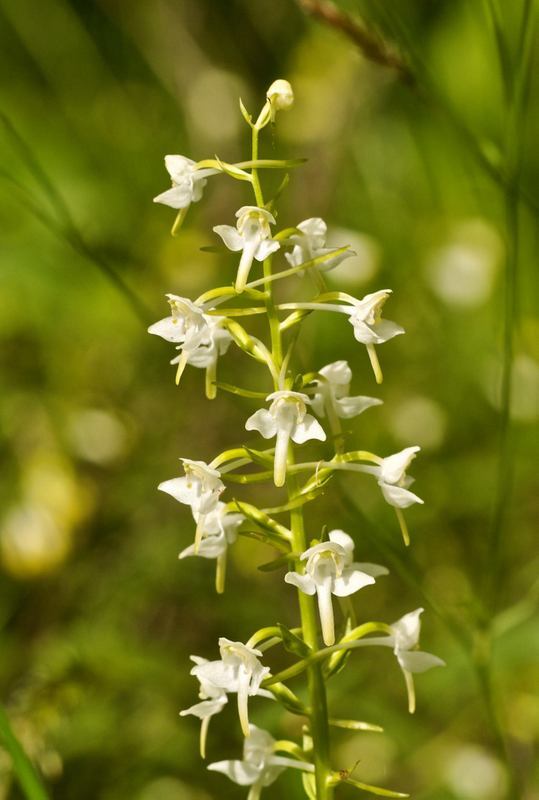Early History
We start in the 1700’s when your rights to vote in parliament pretty much depended on how much land you owned. With this in mind Robert Haldane, who was already the owner of Airthrey Estate (now Stirling University) bought Plean Estate from the Earl of Dunmore. The Haldane family continued to own it until 1799 when it was sold to clear debts.
In 1800 the estate was bought by Francis Simpson who was the son of a clerk at Carron Company. He had served as a Lieutenant in the army before joining the Merchant Navy and becoming a Captain working in the Far East. Having amassed a large fortune he returned to Scotland and commissioned and built Plean House around 1819 together with other estate buildings. Francis Simpson lived there with his daughter Frances and his young son William having lost his first wife in 1806 . The young son (William) did not keep in good health and subsequently died in 1827 at age 22. Francis then remarried in 1830 but having suffered a fall, died in 1831 and was buried in Falkirk Parish Churchyard. All in all a pretty tragic life. In memory of his young son William, Francis left money to found the William Simpson Asylum, a place where men who had served their country in the forces could be looked after. The home, now known as William Simpsons is still in existence today and is regarded as providing a high level of care for its residents and as has recently undergone a major expansion and upgrade programme. After the death of Francis in 1831 Plean house and the estate were owned by the Trustees of the William Simpson Asylum and had various tenants until the end of that century.
In 1901 records show that 
It was during this century, from about the beginning until 1963 that coal was extracted from pits built on the edges of the estate, with associated railways and coal waste which was deposited to form bings. This is the period when most change took place and brought about the dominant features on the landscape, evidence of which can still be seen today.
Quarrying
Quarrying of sandstone in Plean
The period of time, between around 363 and 290 million years ago, when the first reptiles appeared and there were large forests covering the areas that later formed earth's coal layers, are referred to as the Carboniferous sequenceThe presence of Carboniferous rocks (containing or producing carbon ) in central Scotland played a fundamental part in the industrial development of the region. The location of the iron and steel industry and the consequent developments in heavy engineering were in large part due to the existence of seams of coal, ironstone and limestone in the Carboniferous rocks. If you follow the Audio Heritage in the park you can see evidence of the quarry known as Catscraig. This which was one of three in Plean, the others being Craigbeg and Blackcraig.
Blackcraig produced the Plean White Freestone considered to be high quality fine-graded white sandstone. It was one of the last quarries in the area to close having been worked from around1841and finally abandoned by 1913.The sandstone produced at Blackcraigs was used to build the original School and Church Extension at Plean, in bridges on the Plean branch of the mineral railway, also in the chief post offices at Falkirk and Stirling,Cowane’s Hospital and in Stirling Public Library. It was used in a number of buildings in Glasgow and Edinburgh and the Bass Rock lighthouse in the Firth of Forth.
Reference: TECHNICAL REPORT W A/91/25 Geology for land use planning: Stirling (S K Monro, I B Cameron and I H Shall, 1991)
Supplied by the British Geological Society.
Sandstone occurs in thick beds throughout the Carboniferous sequence and in the past considerable quantities of freestone have been extracted for construction in Glasgow, Edinburgh, Stirling and locally throughout the district.
Very old quarries, now mainly obscured, exist at Raploch and Ballengeigh near Stirling. There were also large sandstone quarries at Catcraig , Plean near Bannockburn, Blackcraig and Cadgers Loan in Plean. A freestone known as the Cowie Rock was worked at the Polmaise and Dunmore quarries at Cowie. All these quarries are now infilled. Smaller quarries also exist at Craigbeg, and around Camock, Dunmore Park, Airth and Torwood.
The Plean Estate
1750-1799

1800-1833
This land was then purchased by Francis Simpson, the son of a clerk of the Carron Company who amassed his fortune as a ships captain with the East India Company. He commissioned the building of Plean House followed by the other associated estate buildings and the designed landscape to form Plean Estate. Francis had a tragic life losing his first born child in infancy then his wife a year after the birth of his son William who suffered poor health and died at the age of 22. In memory of William a home for indigent old men known as the William Simpson Asylum was founded in the village of Plean where it still stands today. William Simpsons is now a residential care home for both men and women and provides respite and day care facilities.
1833- 1922
Plean Estate was owned by the Trustees of William Simpson Asylum and occupied by a variety of tenants including the Plean Colliery Company.
1922-1929
The Trustees with the agreement of the Plean Colliery Company sold the house and grounds to Wallace Thorneycroft who was a mine manager and had lived in the house for a number of years before relocating to Devon.
1929-1970

In 1989 the National Coal Board sold the estate to Stirling Council who opened it to the public as a Country Park.Like many estates House keeper, cook, scullery maid, nurse maid for children, stable hands, farrier, kennels staff to look after dogs, gardener, gamekeeper and beaters at shooting parties. During the time the Thorneycrofts lived in the house, cars were introduced to Britain’s roads so instead of travelling by horse and carriage as the Simpson family had done, Captain Thorneycroft liked his fast cars which were driven by a Chauffeur.
Coal Mining
As well as sandstone below the ground in Plean there was also coal seam which was exploited and lead to the opening of many pits all working the upper seams. As this coal was of poor quality the number of pits reduced and Wallace Thorneycroft switched the focus of the business to coke production to be transported and used for smelting in the steel industry. An excellent example of beehive style coke ovens can still be seen today to the south west of the park and visible from the Roman Road.
Originally there were two distinct settlements, the Old village which is situated to the east of Plean House, depicted on the OS 1860 Plan, and the collier village of East Plean.The collier village was built to house the families of the mining community working locally. East Plean was developed from the late 19th Century about half a mile to the north on the A9. By the late 20th Century the two had merged to form Plean village. The village of Plean now comprises both Old Plean and Plean.

In 1922 12 men were killed and 7 were injured in an explosion in the No 4 shaft of the colliery. Shortly after this in 1931the No 5 shaft was sunk a mile from shaft No 4. in order to increase efficiency by decreasing the distance of haulage. By 1959 the demand for coke was shrinking and the colliery closed in 1962.
Mining and Railways

There was a railway station serving Plean for both passengers and freight from 1904-1956 Railways played an important part in moving freight, especially heavy loads such as coal, iron and steel. Even within Plean Estate a tramway was built to move coke and coal from Pit 4 (what is now Plean Precast) to Pit 5 (this is now the industrial estate on the edge of the village as you go towards Falkirk) The line of the tramway is now the horse trail. In order to build that tramway a lodge house at the Glen Road entrance to the park had to be demolished. Today you can still see where the tramway went through a tunnel under the road to the industrial estate and part of one of the original pit buildings is still visible. A mineral railway also ran from the coke ovens at Pit 3 down through the village where the Plean Branch Line then went out under what is now the motorway bridge to join up with the Cowie section. Plean station was close to Galamuir farm.
Another system of transportation was created within the park which moved spoil from the North Bing (from behind the church along towards the village) through the park to create the South Bing. This was done to prevent a disaster if the spoil were to slide downhill onto the school as this had happened in South Wales in 1966 in a village called Aberfan where 116 children and 44 adults were killed when it took only 5 minutes for the spoil to slide down the slope and engulf the school and houses.
Many signs of this “bogie trail” can still be seen in the park and residents in the village have told stories of the conveyor belt system used to transfer the coal spoil.
Present Day Park
Whilst the layout of the Country Park today resembles that of the former working Victorian estate the land use has changed to focus upon the conservation of wildlife and the provision of access for the visiting public to enjoy it.
Little can be seen today of the industrial past unless you know where to look.
The estate is still managed for its flora and fauna such as the extensive woodland much of which was planted in the Victorian era. You can still see exotic mature trees such as Giant Redwood and Spanish Chestnut along the driveways. These were introduced during the era of the Scottish Plant Hunters together with several species of Rhododendron and Azaleas. These colourful specimens can be found within the formal plantings around Plean House. One unwelcome introduction is the purple flowered Rhododendron ponticum which has become a highly invasive pest not only in Plean Country Park but in the countryside as a whole.
The meadows are home to our celebrity species which is the Greater Butterfly Orchid, Platanthera chlorantha which can be seen in large numbers in June and July. The lovely vanilla aroma released by these plants in the evening attracts the moth species which pollinate the flowers. Bees however are drawn to the blossom of the fruit trees in the park some of which have grown there sincce Victorian times. You can marvel at the dazzling bejewelled Southern Hawker dragonflies as they hunt up and down the drives and in the summer lay their eggs in the ponds which also provide a place for newts and frogs to breed.As yo u walk around the core area of the park today, you will come accross some well admired wooden carvings representing of a number of the creatures who live in the park and can be seen or heard on your visit depending on the season and time of day. A current feature of the park is the Heritage Trail which combines the old lost heritage with nature . With audio historical information at each site on the trail accessible via smartphone, the trail can unlock further secrets and stories of the past.



